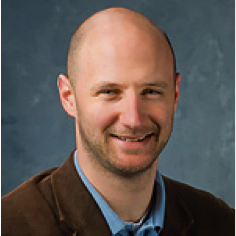Churches involved in new church networks need something to bind them together. That is, they need a cohesive principle that will unite churches towards a common vision and move them towards a covenanted (instead of contractual) relationship.
This is of particular importance given some of the wider contextual realities facing the church situation in post-Christendom culture, most specifically the obvious fragmentation and disestablishment taking place in just about every circle of the historical covenanted and collaborative church systems. These systems once possessed a cohesive principle and an overarching narrative identity that fueled their efforts, but that has now been lost.
A great deal of work has been done within both the pastoral and scholarly realm in recent years to help restore a metanarrative to the activity of the church in this post-Christendom society and provide some sense of cohesion. Not only has this surge of interest served to counter some of the modern, reductionist readings of the Bible, with a particular emphasis on the gospel, but the growing understanding and awareness of the mission of God is shaping the trajectory of the church both locally and trans-locally (see David E. Fitch’s The Great Giveaway).
The growing understanding of the mission of God is shaping the trajectory of the church.
Tweet this.
Missio Dei
To many, the concept of the missio Dei (the mission of God) is barely new in the conversation of church and mission. Conceived and articulated as such during the early 1950s through the work of the International Missionary Council, the missio Dei sparked a Copernican revolution in the understanding of missions.
Inevitably, this revolution integrated its way into the understanding of the church today (see Craig Van Gelder’s The Missional Church in Context. Now, closely (if not synonymously) linked to the mission of God is the equally growing focus on the kingdom of God.
The kingdom of God is the overarching storyline of the Bible, and it encompasses God’s ongoing activity, climaxing in Jesus. God’s kingdom is in partnership with His covenant community, to bring about the renewal of creation as all things inevitably become subject to His will (see James V. Brownson, et al, Storm Front: The Good News of God).
The kingdom of God is the overarching storyline of the Bible.
Tweet this.
This ultimate renewal, which is envisioned in passages such as Isaiah 11, 58, 65, Ezekiel 37, Daniel 12, Matthew 5-7, Romans 8, and Revelation 21 and 22, is enacted in history as God’s mission, or as stated, the missio Dei (see Darrell Guder, Missional Church: A Vision for the Sending of the Church in North America). This is God’s primary focus in history. It is God’s mission, which the church is then called to carry out and embody, therefore making it her mission.
In his book The Missional Church in Context, Professor Craig Van Gelder echoes the preceding sentiments:
God has a mission in the world that looks toward the whole of created existence, and the church participates in this mission by living into and announcing the redemptive reign of God in Christ (the kingdom of God). This framework keeps a strong Christology [previous missiological understanding drew its energy from Christology and the call to fulfill the Great Commission] tied to the larger horizon of God’s redemptive activity within the broader context of the world, and it keeps an understanding of the gospel as being for the sake of the world.
Mission and the Trinity
In order to begin grasping the fullness of the mission of God, it is imperative to understand that the mission of God emanates from the character of God himself. God’s mission is an expression of His life, and, therefore, the mission of God is understood best as we encounter God as Trinity (see Van Gelder’s The Essence of the Church).
As Trinity, God is a social community of three interrelated persons. God is a relational God and, therefore, creates humanity to be welcomed into that circle of relationship (Dallas Willard, The Divine Conspiracy). God desires to partner with his creative image-bearers in the redemption and transformation of the world. God is now presently at work through the Spirit to carry out His mission within the relational community of the church (Brownson, et al, Storm Front).
Yet, beyond the conception that God is relational, it is critical to grasp that God, as the Trinity, is also a God who acts. God is a sending or missionary God who is seeking to rescue His created world. In order to accomplish this, God the Father sent the Son. The Son and the Father together send the Spirit, and the Son sends the church into the world through the empowerment of the Spirit. Therefore, the church exists as the community created and crafted by the Spirit, in the pattern of the Messiah, sent to announce, demonstrate, and reveal the mission of God.
God is a sending or missionary God who is seeking to rescue His created world.
Tweet this.
A Cohesive Principle
Oddly enough, the cohesive principle that should gather churches toward one another in covenanted mission during this new era is no different than that which brought many of the historical Protestant denominations together during their formative stages. Coming out of the state churches of European ancestry, Protestant denominations of many streams can trace their organizational origins to the establishment of missionary societies, both foreign and domestic, to support new work among people that did not have a church in their community (see Earle E. Cairns, Christianity through the Centuries).
These new missionary societies were typically formed within a “family of belief” that had already existed in some form of relationship with one another. (A “Family of Belief” describes a religious group with a shared heritage that typically started around a shared set of beliefs and possibly ostracism from the established religious groups of the time period.) These families had not organized themselves for the scope of the new mission work before, but the belief that the unreached people on the frontiers must have a witness to the God of the Scriptures provided the cohesive principle by which families of belief began to operate in organized cooperation. Professor Robert Mullin and Dean Russell Richey relate,
Denominations began viewing the entire country as their mission field, beginning the slow process of breaking down the ethnic enclaves (families of belief) and moving towards the building of a Christian America. Territory, ethnic groups, piety, and region influence the makeup of denominations, but not as much as the unifying idea that God has blessed the United States in giving it a divine purpose, an ideal that served as the cohesive principle.
Over the years, these established systems have been redirected by both advertent and inadvertent attempts to replace this cohesive principle with a variety of other potentially unifying factors. In addition, as the framework for Christendom developed more concretely alongside the development and growth of the United States, the apparent need for the expansion of God’s mission to unreached communities diminished.
Theologically, one can conclude that the advancement of God’s kingdom mission is the appropriate cohesive principle. This is also affirmed historically, where the mission as a means of unity proved fruitful and effective, and currently, as the majority of emerging new networks that are proving fruitful are gathered around this vision as well.


